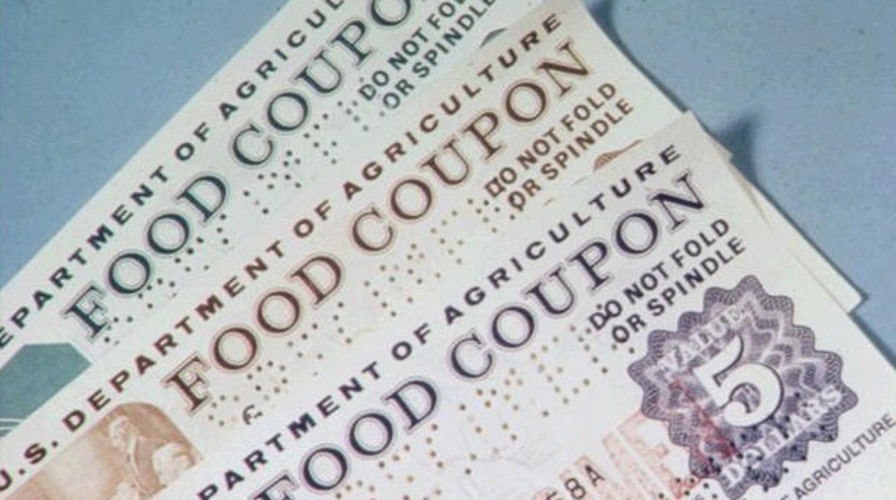The cost of Food Stamps, or SNAP (the Supplemental Nutrition Assistance Program), has ballooned the past two decades.
It went from having a price tag of $17 billion in 2000 to costing $71 billion last year.
That’s why President Trump said he wants to clamp down on government-subsidy programs.
Trump brought up the controversial issue during his speech to Congress on Tuesday, when he said “over 43 million people are now living in poverty. And over 43 million Americans are on food stamps.”
Trump has long been a proponent of scaling back welfare programs. In his 2011 book, “Time to Get Tough,” he wrote that while the programs are necessary, too many people become dependent on them.
"The food stamp program was originally created as temporary assistance for families with momentary times of need,” he wrote in his book. ”And it shouldn't be needed often.”
Many believe government assistance programs are too often abused and they need to be reformed to cut down on fraud.
But others say that any changes to SNAP could cut off access to people who really need it, and they vow to vehemently fight any effort to alter it.
About 45 percent of households headed by immigrants with children use food-assistance programs, according to a study by the National Academy of Sciences. Reports last month said Trump had drafted an executive order that would reduce the number of immigrants using government assistance. It’s unclear, however, if Trump had approved the draft.
Kelly Brown, executive director of North Helpline, a Seattle food bank that serves 800 people a week, told Fox News that about 50 percent of the people they serve receive food stamps.
“I think it's taking people a long time to adjust,” Brown said, “and food is definitely one of the staples that you need to make sure immediate needs are being met.”
In 2000, there were 17 million people participating in SNAP. Last year, 44 million were participating. The increases greatly outnumber the rise in population.
The Department of Agriculture, which runs SNAP, has claimed trafficking (illegally selling SNAP benefits for cash) accounts for over 1 percent of every dollar spent on the program, and that improper payment rates for SNAP in recent years are close to 4 percent.
But some critics of the program estimate the amount of fraud alone is much higher.
Even using the lowest numbers, food stamp fraud and waste cost taxpayers billions of dollars every year.
How President Trump and Sonny Perdue, his nominee for Secretary of Agriculture, would tackle SNAP is unknown. When reached by Fox News, the USDA said it had no comment.
But one thing is almost certain: SNAP will likely be overhauled in the next few years.


